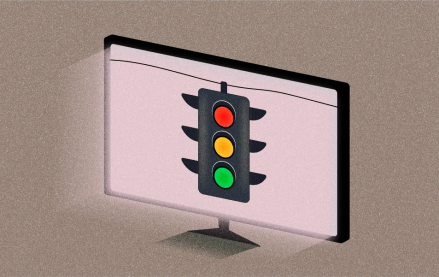
There’s no shortage of professional hand-wringers over the future of journalism. It’s almost as if suddenly journalists woke up to the business they’re in. And still, many are in denial.
Journalists are not in the content business; they’re in the audience business. That audience is then converted into money either through subscriptions or (more likely) through advertising. What’s crazy is journalists seems almost proudly ignorant of the business of advertising. How many media pundits speak regularly to ad agencies and major brands? How many know what a DSP is, or the effects of separating audience data from the media impression?
Instead, many writers secure themselves in gloom and doom. They write about the unfairness of it all. For those of us actually working in Web journalism, this adds yet on another layer of existential angst. “Journalists certainly shouldn’t spend their time worrying about how to make their articles more attractive to advertisers,” wrote Reuters’ Ryan McCarthy recently.
Oh, heavens, we wouldn’t want that. In fact, it’s time journalists take a real interest in how advertising works. I’d go even further. It’s time they get involved in making it. Hope is not a strategy, as they say, and it’s better to deal with the world you live in rather than the world you wish you lived in. The snafu around The Atlantic’s Scientology ad, as former Cheezburger CRO Todd Sawicki pointed out to me, came because readers expected editors to have a say in advertising. And, of course, they did not, at least not enough to steer the business side away from ad content that didn’t fit well.
The banner ad is going to zero. Anyone looking to that to support content operations is insane. That dog won’t hunt. Sawicki predicted display ads will soon become the fully automated preserve of direct-response marketers and retail retargeting. Big-money brand advertising through display? Hasn’t happened, won’t happen. And on mobile, it’s worse.
That leaves news publishers with more custom forms of ads. Call it native, integrated marketing, whatever. “The key is content marketing” is on the lips of just about every brand we talk to. (I recommend this to media pundits.) It’s something a brand like General Electric will pay for. It values that. And the crazy thing is, journalists know a lot about it. They will be needed to figure out how this content can best play to their audiences. This isn’t about fooling people. Things coming from advertisers should be labeled as such. Separation of church and state is a lovely concept, and it still makes sense in many instances. But the idea that journalists can remain aloof from their real industry — and that’s advertising, for the most part — is a fallacy.
Image via Shutterstock
More in Media

What publishers are wishing for this holiday season: End AI scraping and determine AI-powered audience value
Publishers want a fair, structured, regulated AI environment and they also want to define what the next decade of audience metrics looks like.

Media giant Essence launches a marketplace for Black women-led brands
Essence has launched WeLoveUs.shop, a new online marketplace dedicated to Black women-led brands.

In Graphic Detail: The state of AI referral traffic in 2025
The stats reveal a new audience pipeline forming outside of traditional search and social platforms.





